
Silver Spring Park: The Return of the Natives
March 4, 2024 | Topics: Places
By Nancy Sturino and Marlene Jaglinski
The natives have returned to Silver Spring Park in the village of Whitefish Bay, Wisconsin. Native plants, native pollinators, native animals … all on a one-acre parcel atop a cliff overlooking Lake Michigan.
The dramatic turnabout of the park is the result of a collaboration between the Whitefish Bay Garden Club and the village of Whitefish Bay. And it comes as more and more groups nationwide, following the lead of the Wild Ones, are starting to understand the importance of native plants and to promote them as well.

Red cardinal flower (Lobelia cardinalis)
The Garden Club has been interested in protecting the environment since its founding 65 years ago. It started with the creation of Riveredge Nature Center in Saukville, WI. Throughout the years, environmental projects such as rescuing a butterfly garden, creating pollinator pockets and educating the public on native plants have been important issues for the club.

In 2017, the club’s environmental focus changed to Silver Spring Park, which was overrun with invasive nonnative plants like reed canary grass (Phalaris arundinacea), thistles (Cirsium sp.) and garlic mustard (Alliaria petiolata). The park was an eyesore and unusable.
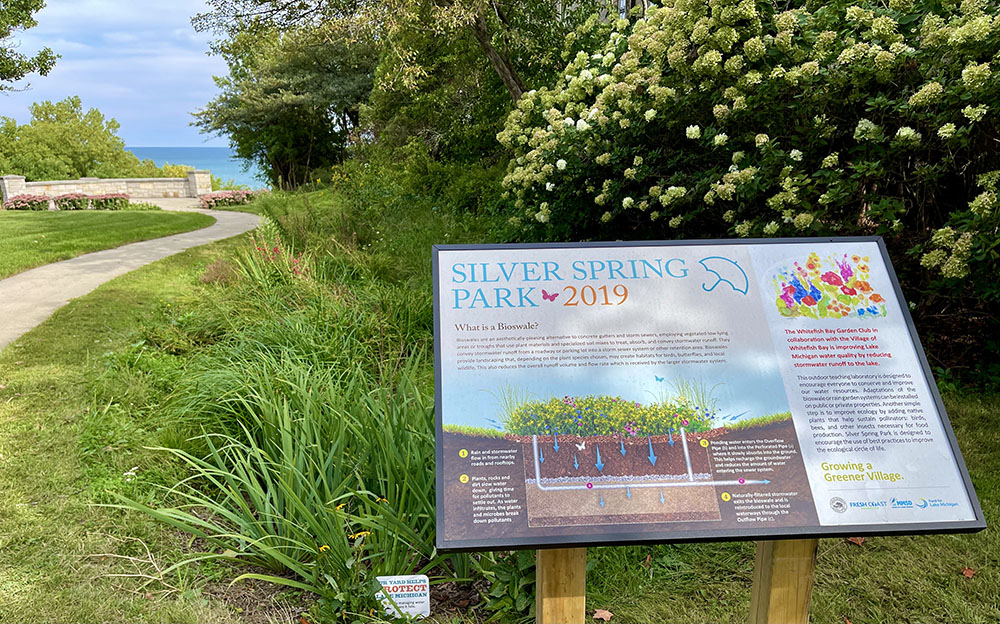
The Garden Club recognized the potential to change this passive space to a sustainable and biodiverse environment and set three goals:
- Collaborate with the village to improve Lake Michigan water quality by reducing stormwater runoff through the installation of a bioswale and rain garden.
- Remove invasive plants and replace them with native, pollinator-friendly perennials, shrubs and small trees to create a wildlife habitat especially for pollinators on the Lake Michigan flyway.
- Using signage, social media and in-person events, educate the public about the beauty of nature and the necessity of environmental initiatives that can be replicated in individual gardens.
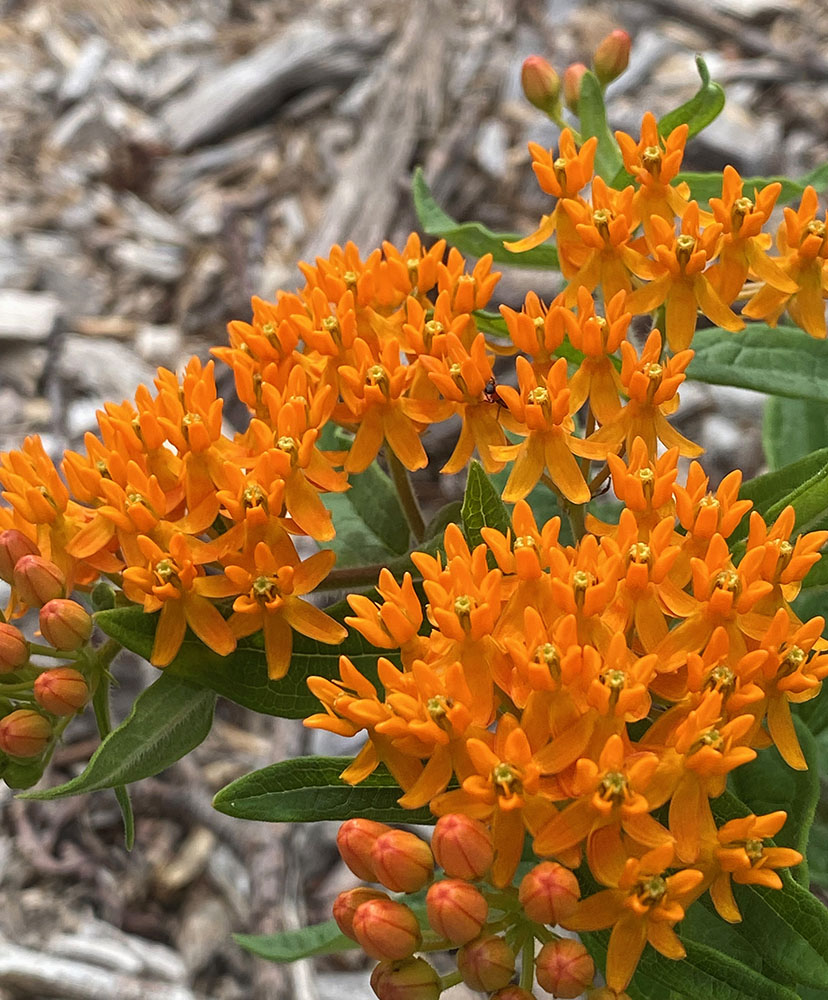
Butterfly weed (Asclepias tuberosa)
The vision and scope of the project was daunting. The club’s cooperation with the village was critical to securing grants to fund the project. In Phase 1, the Milwaukee Metropolitan Sewage District funded the design of the rain garden and bioswale. Then, a substantial grant from the Fund for Lake Michigan enabled the green infrastructure work to continue.

In spring 2020, Phase 2 began with the elimination of invasive weeds. Because the garden club had championed the elimination of toxic chemicals on village land in 2009, environmentally safe alternatives were a necessity. Invasive plants were cut low, treated with industrial strength vinegar and covered with black geothermal fabric and left to “cook” throughout the summer. This process was repeated and the covered acreage was left until late in the spring of 2021. Finally, the area was ready for planting.
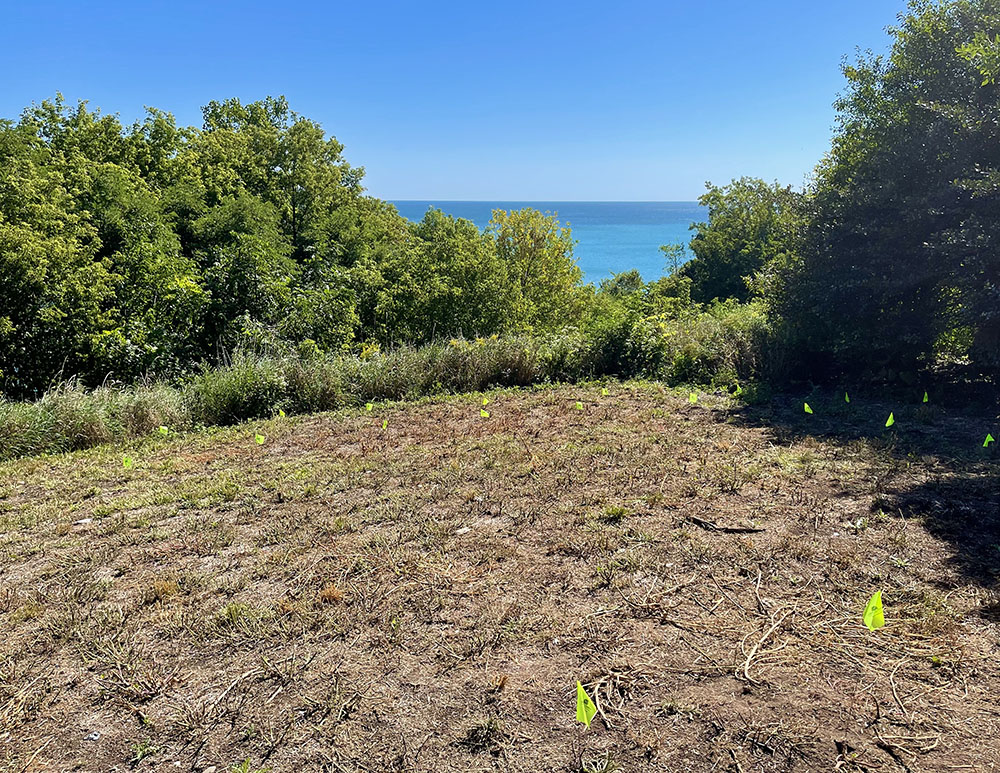
In Phase 3, Johnson’s Nursery submitted a landscape design for the new gardens that included more than 600 native plants. With additional funding from the Fund for Lake Michigan, Fresh Coast Guardians and the Wisconsin Garden Club Federation, the plant installation took place.
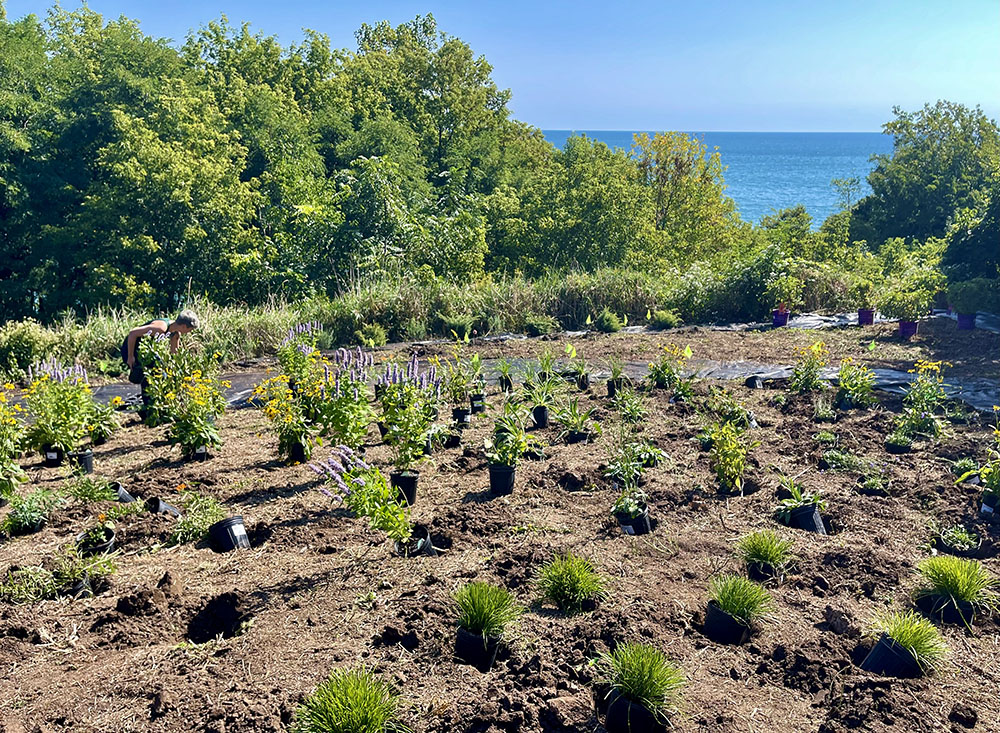
To make the park more accessible, a walking path and benches were installed. Large informational signs about the green infrastructure and native plants were installed and smaller plant markers were strategically placed around the park.

The park officially opened in October of 2021 with village officers, club members, funders and Department of Public Works staff on hand to celebrate this collaborative project. Since its opening, club and community members have continued to weed and add plants as needed. The goal is to include more students, civic and church groups to help with ongoing continuing maintenance. The upkeep of the park is costly as the groups are still developing parts of it. They are raising money by selling celebration stones that will be placed in the park, as well as taking donations.

Silver Spring Park has become a popular destination for walkers and bikers to relax and enjoy the beauty. Visitors can learn about the green infrastructure, native plants and how to incorporate environmentally friendly plants on their own property. This goal ties in with the philosophy of Doug Tallamy in his book, “Nature’s Best Hope: A New Approach to Conservation That Starts in your Yard.” He writes:
“In other words, we are learning how to create landscapes that contribute rather than degrade local ecosystem function. Finally, we are learning how rapidly the animals return to our yards, parks, open spaces, neighborhoods and even cities when we landscape sustainably.”
Our hope to change our environment lies in individuals’ efforts on their own properties.
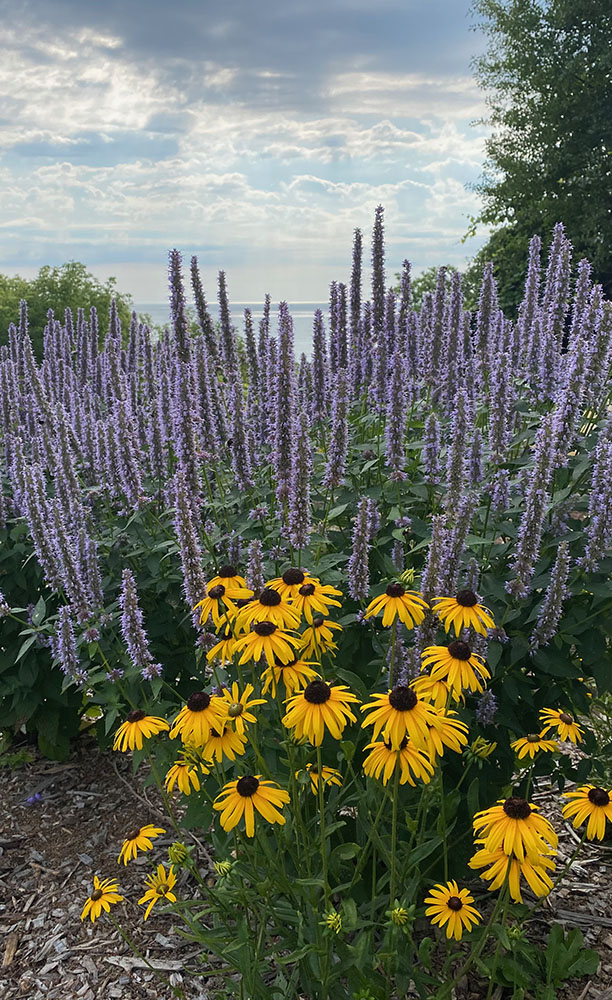
The return of native plants to Silver Spring Park in Whitefish Bay, such as this anise hyssop and rudbeckia, makes for stunning views atop the cliff by Lake Michigan.
Note: The banner photo at the top shows a swallowtail butterfly on wild bergamot (Monarda fistulosa).
Related stories:
Close Encounters in a Suburban Enclave or Why Neighborhood Parks Matter
Indian Creek Woods and Indian Creek: Rebounding with Life in Fox Point
This story first appeared in the Wild Ones Journal, Winter 2023, Vol. 36, No. 4. It is being reprinted with permission from the author.
Since 2016 Nancy Sturino & Marlene Jaglinski, Silver Spring Park co-chairs and long-time members of the Whitefish Bay Garden Club, have championed the restoration of Silver Spring Park by securing over $80,000 in funding, implementing green infrastructure and native plantings that offer passive and educational opportunities for the public and welcoming habitat for pollinators and other wildlife. All photographs courtesy Whitefish Bay Garden Club.

